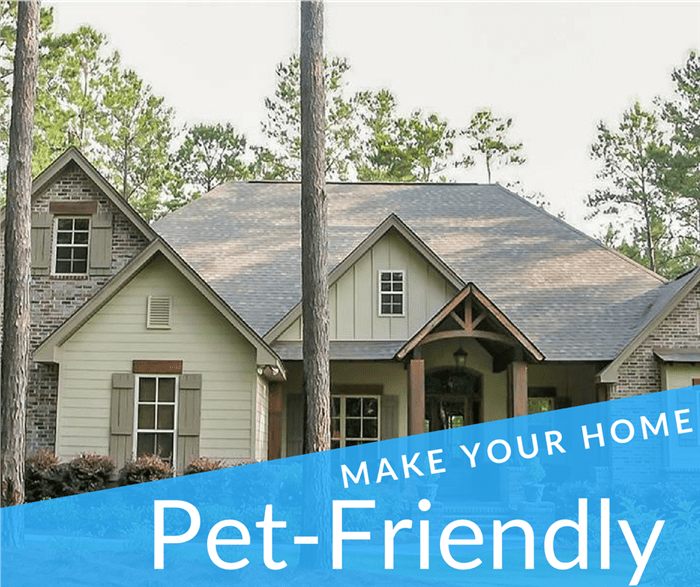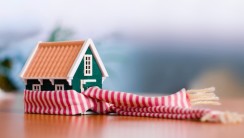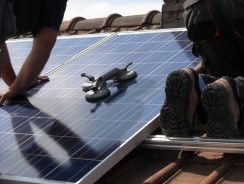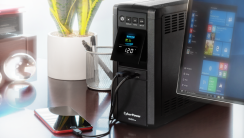
If you're considering bringing home a furry friend, there's a great deal of preparation that precedes welcoming them. From stocking their supplies to preparing your children to welcome a fur sibling, adopting a pet is no mean feat. One of the most tedious, and yet most necessary activities is making your home a pet-friendly space. If you’re wondering where to get started, here’s our handy checklist of essential home improvement hacks to make your home a safety abode for your four-legged friend.
Revamp Your Flooring & Carpeting
Even the most well behaved pet is going to leave plenty of scratches and paw prints on your flooring. You don't want your house flooring looking like a jumpy toddler's scratch board. So if bringing a pet home is on your mind, trade that glossy flooring for a rather understated one. Flooring tiles for large areas of your house will have to serve the purpose of being anti-skid, hiding dirt or paw marks and being low on maintenance. Wooden flooring is not feasible either, as your pet may attend to nature's call all over the place, especially in the initial stages. You don't want to manage wet wooden flooring over and above all the rigmarole of having a new pet.
Any fancy carpets or floor mats will also have to be put away indefinitely. Not only are carpets and rugs dust havens, making cleaning tedious, they also run the risk of causing respiratory problems as they can accumulate fur, bacteria and hair. Go for no-fuss simple cloth doormats, if you must.
Prep Your Backyard
Before you usher in your pet buddy, scan your backyard to ensure it's safe for a pet, because that's going to be his new hangout. Try and create a free open space for him where he can run and play. Put away any large twigs or debris that can hurt your pet. Park your vehicles inside the garage lest his paws and nails play mischief on its glossy paint.
If your neighbourhood often witnesses any potential predators for dogs or cats such as coyotes, snakes, skunks or raccoons, you will have to up the ante in terms of security in your backyard. Set up a tall DIY dog fence that goes over and above your pet's leaping height. You also need to check if any burrows or pits are on your backyard surface, which could very well be the breeding ground for predators. Seal off any open corners that could develop into havens for snakes or other poisonous reptiles.
Limit Exit Routes
The last thing you want is chasing your pet from one room to another and out of your home. Mind you, it's going to be a hell lot of fun for your pet, because he has your attention all on himself and is getting to play with you (or so he thinks). Not quite for you, though. Cut the chase and limit the number of entry and exit points in your home.
Seal off backyard exits, balcony exits and French windows. Not only can these be tedious for you to monitor, these exits can also pose a grave risk to your pet's safety. Some dog breeds can jump up to six feet height, making open windows at a height a risky proposition.
Create An Indoor Nook For Your Pet
After all the exploring and playing, you pet will want to come back to a cosy spot he can call his own. In order to set up a nook for your furry friend, you'll have to invest in a couple of pet products for your dog suiting his habits and his breed. While outdoor dogs need a kennel storing his size and his habits, a house dog will require you to set up a spot for him indoors. you can find all of these dog essentials and more at http://www.mydogsupplies.com.au
Watch Out For Floor-Level Hazards
Whether you go in for an outdoor pet or an indoor pet, your four-legged friend is going to explore the interior of your home. And, what may seem harmless to you at your eye level could in fact be a potential hazard to your pet at their level. Hanging wires, unattended electrical work, cleaning agents, chemicals and sharp objects lying around within their reach are just some of the risks you run with a home that's not Pet-Friendly. As a practice, avoid power sockets at floor level, as these can be dangerous not just for you pets but also for crawling babies. Some furniture pieces may have sharp edges that can hurt you pet. Check all sides of your furniture to ensure they're safe in case of an odd collision.
The best way to eliminate accidents that can arise out of these hazards is to go down on your fours and explore your home from the eyes of your pet. You will have done away with most mischief making items from that view. Double up you vigil by storing any sharp objects or cleaning agents in cabinets with shutters, so you pet's curiosity doesn't get the better of him.
Check Your Garden
Your garden may be absolutely harmless and rather therapeutic to you. But, to your pet, some seemingly benign plants may just run a risk of poisoning. It would help to get some professional advice on this matter and eliminate plants that are harmful to certain pets. For example, tomato plant, aloe Vera and daffodils are harmful to dogs while lilies and tulips aren't the best choice if you have a cat around.
Also, it is best to do away with plants that carry thorns on their stems altogether. You don't want your enthusiastic furry friend to end up with a nasty cut from his escapades in the garden.
Now that you have ticked-off your home improvement checklist to bring in a pet, the only thing left to do is bring your furry friend home. As you make space for him/her in your home, make a whole lot of space in your heart too, because pets crawl in their real quick!









Author
Homesgofast com
Homesgofast.com is an international real estate portal and news source for Google news. Publishing international real estate, finance, homes and travel-related news and blogs for a targeted audience since 2002. Each news item is circulated to thousands of potential readers each day and is also available to the millions of people who sign up for Google news alerts. Find homes offered for sale and to rent direct from owners and some of the best real estate agents from over 35 countries